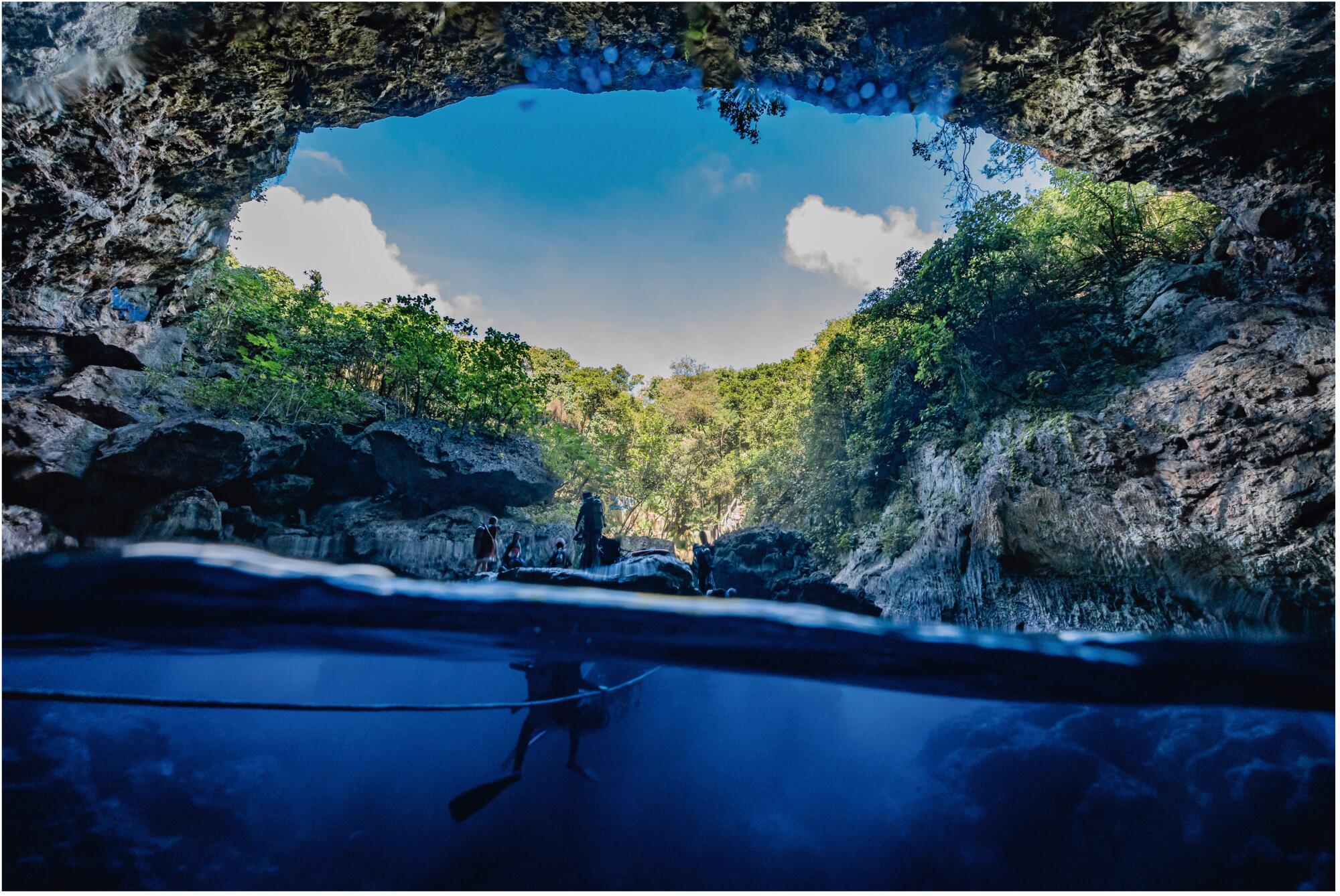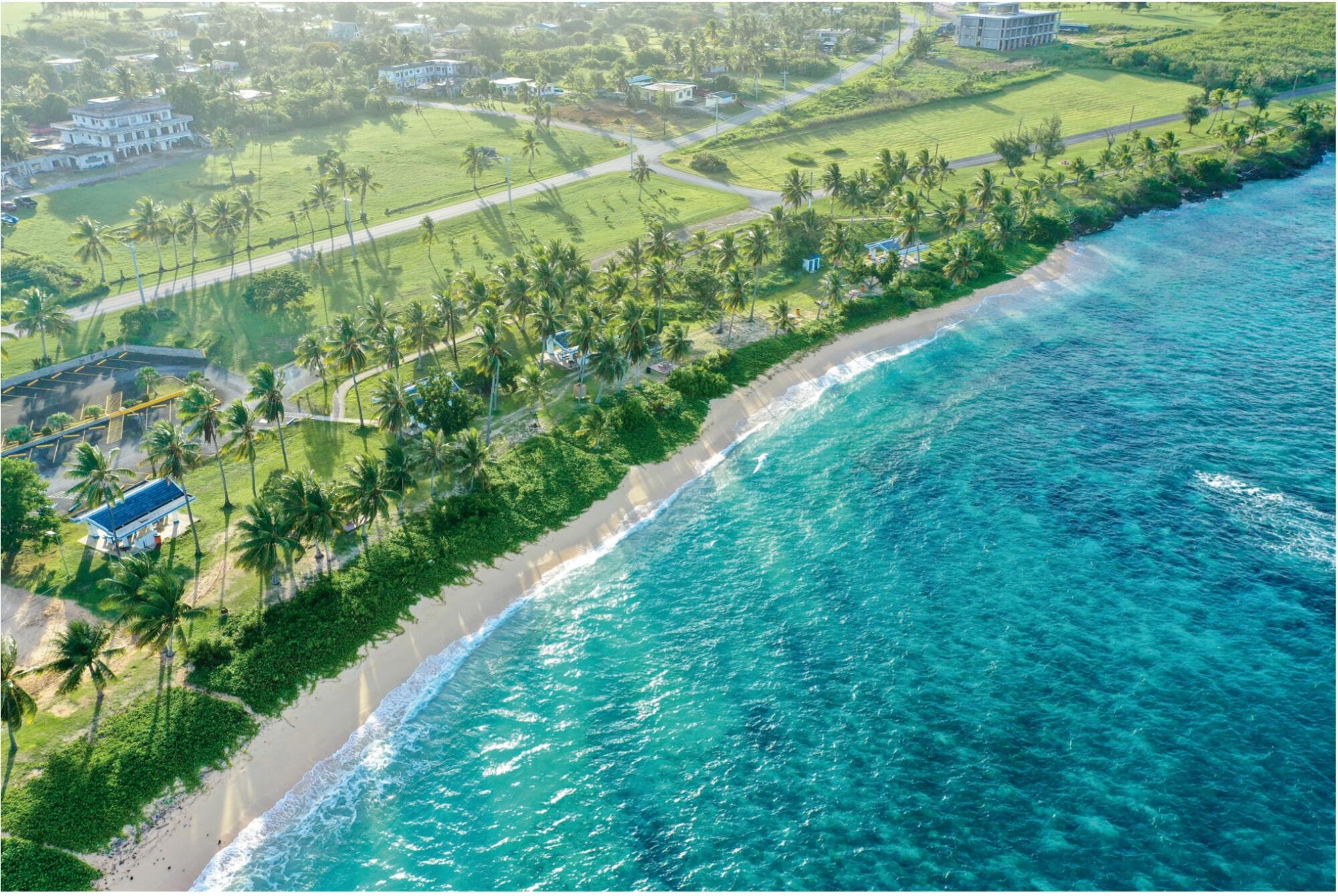
- Share via
The Marianas Visitors Authority works to position the Pacific Islands of the CNMI as a favorite destination for vacationing families in the region.
Crystal-clear waters, spotless sandy beaches, and year-round summer weather make the Marianas archipelago an idyllic travel destination. The Marianas Visitors Authority (MVA), is in charge of telling the world about this irreplicable tourist experience.
Hit strongly by the COVID-19 pandemic, the sector is already at over 50% recovery thanks to the MVA’s tailored online and social media campaigns, aimed towards the islands’ most populous neighbors, Japan, Korea, and China, and designed to convey a simple message: Three hours from Tokyo, four hours from Seoul, and five hours from Shanghai, Beijing or Hong Kong exists paradise.
“We’re a favorite among Asian countries because of our proximity and because when the sun leaves them in winter, they can come to find it in the Marianas,” said the Authority’s Managing Director, Christopher A. Concepcion. “We welcome visitors from the whole world and are eager to tell them about our little corner of perfection.”
In The Marianas, tourist infrastructure caters to high-end experiences for visitors interested in quality leisure time and exceptional service. The islands offer a wide range of accommodation options focused on quality. Visitors can expect The Marianas’ famously attentive service, superior care, and friendly attitude. “We all know each other here. We treat each other like family,” added Concepcion, “We want visitors to experience the true meaning of Micronesian hospitality.”

The Commonwealth of the Northern Mariana Islands (CNMI) are a volcanic archipelago; some islands, like Anatahan, Pagan and Agrihan, still have active volcanoes. CNMI provides visitors with fascinating natural landscapes and views that are impossible to find elsewhere. Saipan is the commercial heart of The Marianas, their capital, and the epicenter of the populated islands’ cultural, sporting, and leisure activities.
With a history that goes back over 4,000 years and traditions still maintained by the Chamorro and Carolinian indigenous people through festivals, crafts and gastronomy, Saipan is the crossroads of ancient and modern, where visitors can switch from traditional festivities to the downtown Garapan district, with its excellent restaurants, bars, and shopping facilities. “In Saipan, you can scuba dive in a turquoise lagoon with wrecks from the Pacific War, and right after be sipping a cocktail on the beach, it has it all,” adds Christopher.

A hop away from Saipan is Tinian Island, surrounded by exceptional coral reefs favored by snorkelers and scuba divers, covered in jungle, cliffs, and limestone caves which are home to exotic flora and fauna, including the rare Tinian monarch, one of the island’s endemic birds. Inside the jungle, abandoned ruins, Shinto shrines, World Word II relics, and even the airplane runways that launched the atomic bombs on Hiroshima and Nagasaki make Tinian Island a natural paradise and a place charged with history and meaning.
“The ruins of Taga House, a thousand-year-old, 12-stone house of the Latte period of our history, is a breathtaking spectacle because it tells the story of who we are”, said Concepcion. Tinian is also home of the annual Pika Festival, founded and hosted by the MVA, which brings together indigenous crafts, local cuisine, live entertainment, sports and the legendary hot pepper competition, in which the brave attempt to eat the local Donni Sali pepper, the reason why Tinian is known as “the hottest island in the world.”
Yet if Tinian is the hottest, neighboring Rota Island is known as “the world’s friendliest island” due to its inviting nature and the smiling and charming hospitality of its people, who to this day wave hello between passing cars. “You land in Rota, and a sense of family overtakes you instantly,” said Concepcion, “which is why it is a favorite for family retreats, weddings, and celebrations.”
Equipped with state-of-the-art resorts and a golf course, Rota Island is a place for self-care, nourishment and relaxation. Among its most sought-after treasures is its local cuisine, which includes delicacies such as its feel-good sweet potatoes and delicious-yet-maddening coconut crabs. It has its own story to tell, with its German-era chapel, Chugai pictographs, a Japanese cannon, and an NKK sugar mill and train, not to mention the As Nieves Latte Stone Quarry, where the stones seem to come alive. For those seeking pure natural wonders, the island holds a variety of diving sites with underwater wrecks and coral formations, a bird sanctuary and hills featuring breathtaking views of the Pacific Ocean.
The Mariana Islands also lure practitioners of all water sports and are home to the unique and ancient art of proa sailing. The Micronesian art of navigation, practiced on handcrafted sailboats, is kept alive by the Indigenous Affairs Office, Carolinian Affairs Office, and the 500 Sails organization, which are focused on restoring Chamorro and Carolinian maritime traditions for all in The Marianas. “We work closely with them, providing resources and preparing promotional activities. Chamorro and Carolinian navigation is remarkable and of cultural value: navigating the seas in a proa with the technology that existed before European contact is fascinating and forms part of our identity,” added Concepcion.
The success of the MVA in bringing the Mariana Islands to the forefront of global tourism is not only explained by their crucial marketing strategies but also by their willingness to work hand in hand with the community, assisting and collaborating with those projects, efforts, and ideas that bring out the best in its people and culture and that make The Marianas a place like no other in the world.
“This is why so many people are also interested in investing here, partnering with these projects, or even setting up shop in our islands,” concluded Concepcion. “You enjoy U.S. laws, security, and rights, but you’re in a place like no other.”